Why are Kitchen Knife Skills so Necessary?
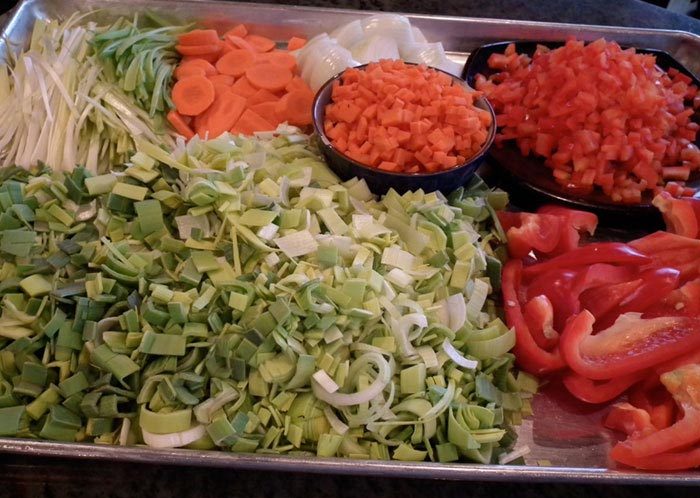
Proper kitchen knife skills help fuel your body and make your cooking experience fun, fast, flavourful and safer!
The truth is we need to nourish our bodies with a large variety of fresh fruits and vegetables, and the reality is that it can be time-consuming to prepare them.
Let me make it easier for you by listing some fundamentals about cutting and chopping fruits and vegetables in your kitchen so it is not a chore.
I am on a mission to eliminate tiny, blunt chopping knives and teeny, slippery cutting boards from Ontario kitchens!!!
Choosing a kitchen knife
Put those little, blunt paring knives away! A (sharp) paring knife is used only when you require finer kitchen work—cutting something with more precision.
Everyone needs one sharp, large knife to save time and to remain safe in the kitchen—and very often, it’s all you need to do most of your knife-related jobs in the kitchen.
Efficiency in your movement is tied to the chef knife’s heft, shape and balance. The blade streamlines your work if it measures between eight and 14 inches in length and looks somewhat triangular. This allows for an energy-efficient rocking motion. Have a look at cooking shows on TV or online to get a sense of the movement you are looking for.
There are a few intricacies to a proper knife’s style, shape and materials. These characteristics are unique in various knife styles, such as German-style, French-style or Japanese-style knives.
Generally, cost indicates the quality of the knife’s blade and handle and the life of the knife, but that is not always the case. To make an informed decision, research and seek advice from a reputable kitchenware store. Many affordable options are out there, so don’t feel you need to buy the most expensive one. A good knife will likely have a stainless steel, high carbon stainless steel, or ceramic blade.
In my area of Dundas, Ontario, I LOVE the knowledgeable and helpful customer service—and source my quality knives—at a Dundas, Ontario, kitchenware store, The Keeping Room. I also source utilitarian chef knives from Nella Cutlery. Also, check out Sharp Knife Shop, a local Hamilton shop for knives, sharpening and knife skills classes.
Hold a kitchen knife to test how it feels in your hand. It may feel strange if you have never held one, but it should not feel unwieldy or unbalanced. Ask questions.
Each knife has its small advantages and disadvantages. Just be sure to choose one that can be sharpened.
Kitchen knife sharpening
You must regularly sharpen your knives. There is no such thing as a permanently sharp chef’s knife!
Dull knives require you to put extra force behind a job or action. That can lead to the knife moving unexpectedly and a forceful trauma to your body. Test the bluntness of your knife by slicing through a fresh tomato’s skin. If it slides through the skin like butter, it is sharp. If it crushes the tomato’s skin and flesh even a bit, it is dull and needs sharpening.
Sharpening steels (honing steels) do not sharpen your knife—they only temporarily realign blade edge deformations and are meant to be used daily before and after your chopping. The blade needs an actual sharpening (grinding) several times a year.
Source a location that will sharpen your knives for you. In my area, I get my knives sharpened at The Keeping Room.
Alternatively, you can sharpen and hone your blade at home if you have an excellent home-sharpening device and are proficient at sharpening stone techniques (stones of various grades are available at kitchen stores and hardware stores).
Most professional chefs sharpen their knives every week.
Cutting boards
Throw away your tiny cutting board! A large cutting board—at least 18 inches by 12 inches—made of wood, composite wood or pliable plastic allows your knife to rock efficiently without slipping or catching on the board. NEVER use glass or glass-like plastic boards for chopping—they are slippery and should be outlawed!
Anchor your cutting board in place on top of your counter with something that grips your cutting board to the counter. Place a slightly damp, clean kitchen cloth or rubber grip drawer liner under your cutting board AT ALL times! It makes your job so much easier.
Using a kitchen knife like a chef
When chopping, place your feet flat on the floor, wearing closed—not open-toed—shoes. Keep alert and pay attention at all times when you are chopping.
Keep organized and tidy while working. Never load up food on the board. Continuously clean away your chopped items so you are not crowded while working—being crowded impedes your chopping motion. Stop, clear the board and continue.
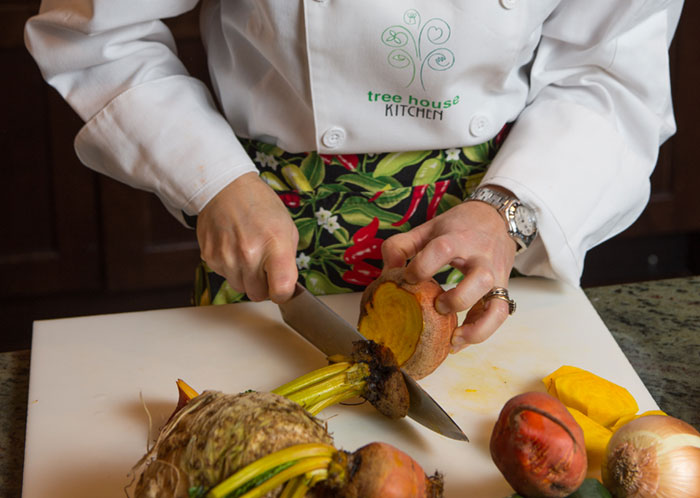
Keep your non-knife-holding fingers bent and anchor the food item so that only the flat base of your knuckles are exposed to the knife blade. This would be the intermediate phalanges of your index finger, middle finger and ring finger. It will look somewhat like you are playing the piano on the food item. This position ensures your fingertips stay away from the blade at all times. Watching a professional chef in action can help you better understand what this looks like. If you do happen to make a mistake—with your knuckles and fingers correctly positioned—you will only graze the skin of the flat face of your finger and avoid making a more serious error.
Never catch a falling knife—just let it fall—and never cut toward your body. When walking around the kitchen with your knife, point the tip down to the floor with the sharp blade facing behind you. If you are approached unexpectedly while you or they are rushing around the kitchen, they will only bump up against the dullest edge of the knife.
Think about balancing your food on the cutting board for your safest cut; take your time and do not rush. If something is tipping, slipping, rolling or wobbling while working, reposition it to ensure safety. For example, when chopping round fruits and vegetables, I lop the ends off the rounded objects to create a flat surface to station them on the board.
Washing and storing your kitchen knives
Hand wash your knives with soapy water one at a time. Never leave a knife in sudsy water, as it will camouflage and is guaranteed to slice someone. Never wash your knives in the dishwasher—this will dull them.
Store kitchen knives in knife blocks, on magnetic knife strips or in knife-protective (finger-protective!) knife drawers.
Kitchen knife skills inspiration
The vegetables pictured in the first photo were chopped by adult students—who were completely new to holding chef knives—during a two-hour session of knife kitchen skills hands-on instruction. This is the precise, large-quantity result!!! Every time I taught that class, I was so impressed with people’s inherent skills—they are just waiting to be nurtured a little bit. I offered kitchen knife skills classes (and included a knife to take home) several times a year at Tree House Kitchen.*
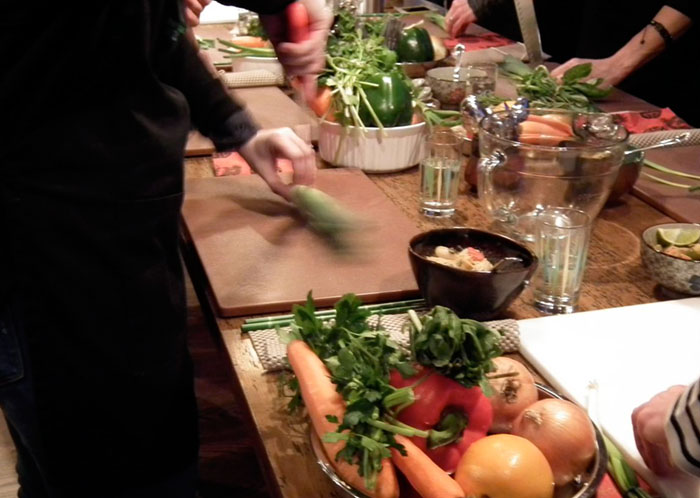
I hope I have inspired you to consider upgrading your kitchen chopping equipment—it is money well spent.
*Update: We’re so proud of the work we’ve done in our hands-on teaching and dinner party classes. Working with you, our clients, has played such an important part in the new direction of Tree House Kitchen as a food literacy company, specializing in problem-solving skills and resources for busy families and community members – like you! We hope you enjoy reading about our past classes, and also where we’re headed moving forward.

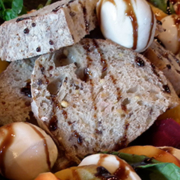
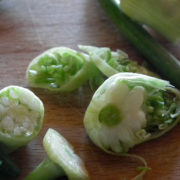
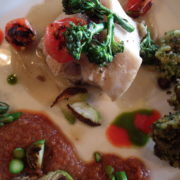

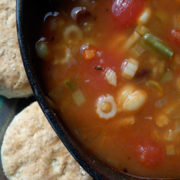
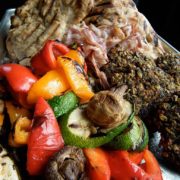

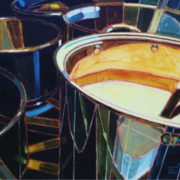


Aw, this was a very good post. Taking a few minutes and actual effort to make a really good article… but what can I say… I procrastinate a whole lot and never seem to get nearly anything done.
We are happy to hear that you enjoyed our kitchen knife skills tips! Creating new habits one small step at a time is a good way to move past procrastination. If you have a specific situation that you would like help with, please let us know. Also you can ask your cooking question using our “Ask a Chef!” form – find the button at the top of the website. Bon appetit!